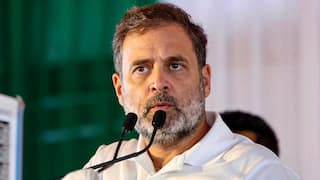Sensex Tanks 949 Points, Nifty Ends Below 17,000 On Omicron Fears
Top losers in the BSE pack included IndusInd Bank, Bajaj Finserv, TCS, Bharti Airtel, HCL Tech, and Tech Mahindra with their shares crashing as much as 3.75 per cent

New Delhi: The key Indian equity benchmarks — Sensex and Nifty —crashed on Monday as investor sentiment was dented by rising cases of the Omicron variant over the weekend.
The Sensex dropped over 1,000 points and Nifty 50 index briefly tumbled below its important psychological level of 16,900.
On Monday’s trade, selling was clearly visible in IT and FMCG shares, while select auto and financial stocks also weakened as the progressed. Index heavyweights such as Reliance Industries and Bharti Airtel, too, lost ground.
Top losers in the BSE pack included IndusInd Bank, Bajaj Finserv, TCS, Bharti Airtel, HCL Tech, and Tech Mahindra with their shares crashing as much as 3.75 per cent. All 30 shares finished in red.
On the NSE, all sub-indices ended lower with Nifty IT, pharma, auto, and FMCG dipping up to 2.7 per cent.
Both indexes clocked their lowest close since August 27.
On the other hand, shares of Hong Kong closed at a 14-month low, dragged by tech giants that tracked losses on Wall Street.
In the first 15 minutes of the trade on Monday, the Sensex was trading 71.64 points, or 0.12 per cent, lower at 57,624, and the NSE Nifty was trading 20.60 points, or 0.12 per cent, lower at 17176.10. Looking at Nifty indices, the decline can be seen in bank Nifty and is trading 161.50 points, or 0.45 per cent, lower at 36,035. The Nifty 50, however, is showing a slight rise and is trading above 8,400.
Meanwhile, the three-day monetary policy committee (MPC) meeting of the Reserve Bank of India started on Monday. The RBI is expected to maintain status quo on the interest rate policy but investors will watch out for commentary from the central bank to get direction.
According to a Reuters poll of economists, the Reserve Bank of India (RBI) will hold rates at its December meeting and hike its reverse repo rate early next year and increase repo rate the following quarter.
Related Video
Union Budget 2025: Arvind Kejriwal lists the shortcomings of the Modi government's budget | ABP News | AAP





































